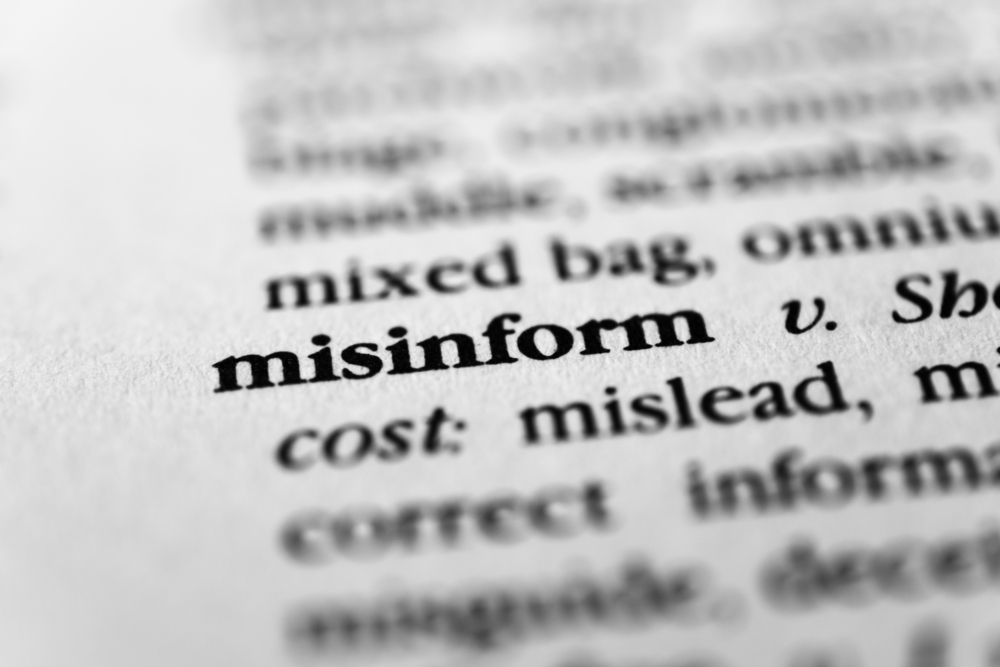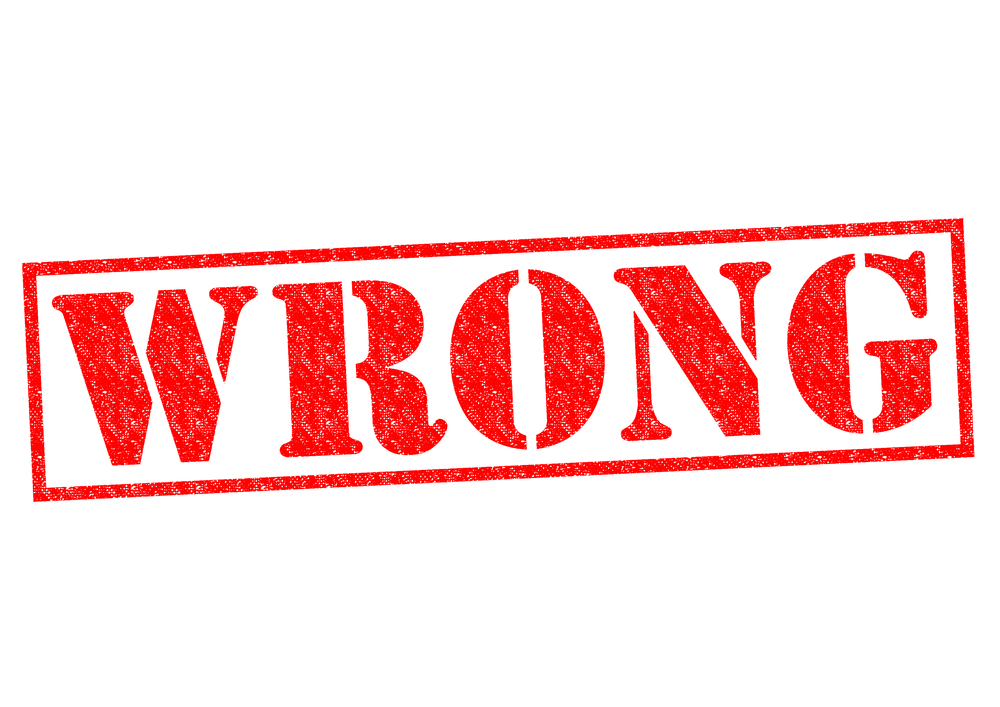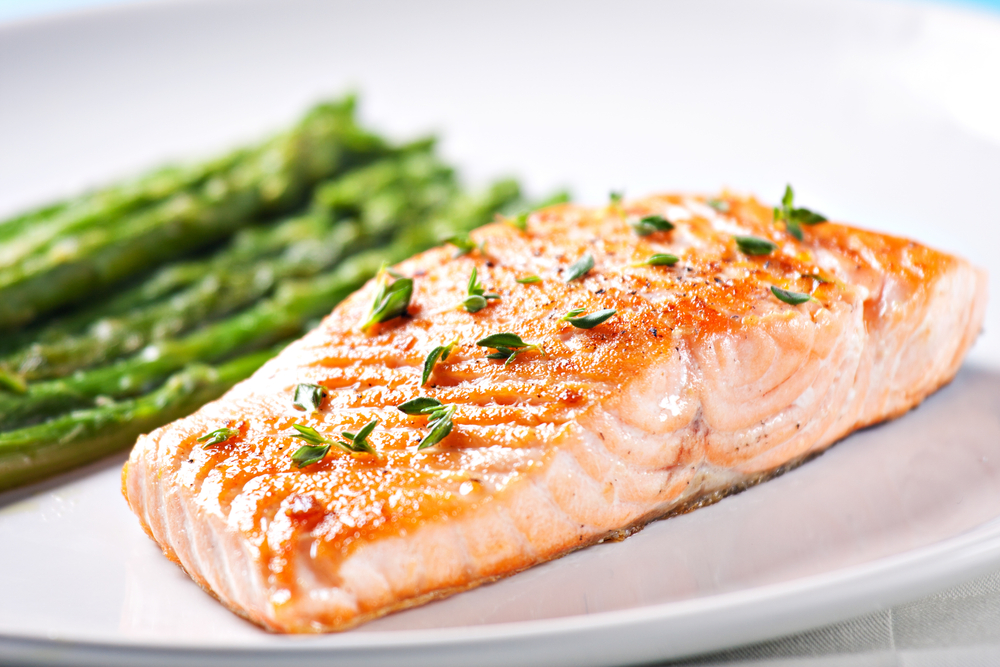All posts by NFI Media
Michael Pellman Rowland is Not Here to Help You Learn More About Seafood
Michael Pellman Rowland is not here to help you learn more about seafood. He’s here to turn you off of seafood and on to a vegan diet. While he doesn’t describe himself as vegan very often in print his wife’s website certainly does. He’s focused on “reducing suffering” felt by fish and goes about that mission by claiming there will be no fish left in the oceans in the next fifty years, due to commercial fishing. A claim he backs up with links to thoroughly discredited 11-year-old articles.
Reporters looking for real resources on seafood should contact the National Fisheries Institute. We would be happy to provide you with myriad independent, science-based resources who are not disingenuous activists purposely pedaling misinformation.
Reporting on Reporters: Time Magazine
Time Magazine is one of the most honored and celebrated news publications on newsstands today. And that may be part of its problem, no one gets their news from newsstands anymore. Despite its history of award winning journalism, the publication displays a shockingly outdated model when it comes to reporting on seafood.
Time Magazine Reporters Pigeonhole Seafood Coverage
Here are the categories Time reporters appear to be directed to use in order to pigeonhole its seafood coverage; Farmed vs. Wild, emptying the oceans, environmental hyperbole, ambiguous health issues. If they’re writing on seafood it seems the report must fit in one of those categories or it doesn’t get any ink. Lazy, outdated and marginalizing might describe this editorial strategy.
A Pattern Persists
This is not simply a vague observation, it’s a well-documented pattern that has persisted for years. When you’re not spending copious amounts of your time at the newsstand, you can read through some examples for yourself here, here, here and here.
Digital Distortion?
In its latest, not particularly interesting, retread of a story about how salmon gets its color Time produces an accompanying video. Hats off to them for straying from the print model a mere 12 years after YouTube went live.
In the video Time leans on its old editorial crutches by starting off reporting that (0:38) “…wild salmon is better than farmed says Dr. David Katz.”
Really Time?
- A United States Department of Agriculture (USDA) study published in theJournal of the Academy of Nutrition and Dietetics “… showed that consuming farm-raised salmon was an excellent way to increase omega-3 fatty acids in the blood to levels that corresponded to reduced heart disease risk”
Then Time transitions into a nebulous health issue noting that, (0:48) “…farmed salmon might not provide as many omega 3’s.” Perhaps we should ask Harvard medical school if that’s accurate?
- “…farm-raised salmon tend to have more total fat — and therefore more omega-3 fat — than wild ones. Bottom line: Don’t stress too much about your salmon selection.”
Time Magazine Lapped
Time also notes (0:54) that omega-3 content in farmed fish is lower than it used to be but are still, “ten to 100 fold higher than most other food groups.”
Wait, what? This is the salient point Time choses to highlight in its reporting, that the omega-3’s are lower these days but are still 100 times higher than in other foods? That’s like saying Usain Bolt is slower these days… but he’s still 100 times faster than anyone who works at Time magazine. News? Not quite.
Farmed and wild salmon complement each other. Both are safe and delicious. And seafood is the healthiest animal protein on the planet. Perhaps Time will one day abandon its outdated editorial tactics and embrace the actual seafood narrative that published, peer-reviewed science has.
Eat This Not That Has Finally Lost All Credibility
Once sort of an interesting site with a quirky take on a few nutrition axioms, Eat This Not That has evolved into a click-bait machine with zero nutritional credibility. Its latest foray into nonsense peddling involves editors apparently telling writer Sarah Crow to find 75 “healthy foods” and do anything you can to them to ensure you’re able to report that they are not healthy.
Wait. What?
Crow reports that Prepared Salmon is unhealthy because it “is regularly coated in toppings that have no place in a healthy meal.” Wait. What? “Toppings” make an incredibly and inherently healthy protein like Salmon an unhealthy food according to Eat This Not That?
Ummmmm… doesn’t that make the toppings unhealthy, not the salmon?
Better avoid those potatoes
That’s like saying baked potatoes are dangerous and potentially deadly… when coated with cyanide. Oh, yeah. Better avoid those potatoes.
Eat This Not That Standards
Come on Eat This Not That you’ve got to have some editorial standards… don’t you?
I guess not.
Mercury in Fish: The Washington Post Recycles Bad Seafood Advice
In a reprinted piece presented as advice to confused consumers looking for healthy seafood options, (“Eat more seafood for your health, right? Actually, it’s not that simple”, May 20) Keri Szejda in fact parrots some of the most common misconceptions about omega 3’s, mercury in fish, and sustainability leaving readers more confused than informed. Let’s examine some of her claims.
Omega 3 fatty acids an essential part of a healthy diet
On omega 3 variability from fish to fish: Szejda correctly notes that omega 3 fatty acids are an essential part of a healthy diet, but her summary dismissal of tuna (“an ok source, but it’s a mixed bag”) is at odds with the conclusions of groups like the American Heart Association. It also ignores other factors salient to real Americans trying to make good choices in the supermarket, including canned tuna’s widespread availability, versatility, and affordability versus other options.
Mercury in fish doesn’t have to be scary
On government advice about mercury in fish consumption: Szejda’s recap of the details around FDA advice on seafood consumption fails to provide readers with the most important piece of big-picture context: there has never been a case of mercury poisoning as the result of the normal consumption of commercial seafood found in any peer-reviewed medical journal in the U.S. The scientific consensus points towards overwhelming evidence that increasing the amount of fish Americans eat would lead to better overall health.
The sin of Omission
Szejda’s omission here is not harmless, and misleads readers in potentially serious ways. A long-term study showed that children whose mothers had reduced their seafood intake during pregnancy had appreciably lower IQs. Those children missed out on key nutrients like Omega-3 fatty acids – which every major health organization says are essential for healthy brain development.
Sustainable tuna
On fishing methods and sustainable tuna: Departing from the scientific consensus, Szejda parrots the claims of irresponsible activists, which have no basis in empirical reality. The truth is that the fishing methods preferred by these groups would require vastly more fishing vessels emitting far more carbon to meet current global demand for tuna. And that’s according to an independent study from researchers at the University of California. Not only are these methods environmentally unsound, they’re economically inefficient, and would likely lead to dramatic price increases in a seafood staple for millions of Americans.
Unnecessarily complicating a critical public health mission
Szejda may have undertaken this piece with the best of intentions, but it nevertheless does a disservice to the readers she’s trying to help, and further complicates the critical public health mission; stemming the dangerous decline in Americans’ seafood consumption, which peer-reviewed research shows is contributing to tens of thousands of preventable deaths each year.
Another Greenpeace Stunt Falls Flat
Greenpeace is once again using a half-baked ploy to mislead the public and entice credulous reporters into providing it with free publicity. In a carbon copy of previous failed efforts, the group has released a manufactured list that purports to rank various canned tuna brands. But the list gets basic facts flat wrong, and relies on an utterly unverifiable and subjective methodology that is concealed from the public.
Facts & Figures or Vague Generalities
How many companies participated in the survey? Greenpeace doesn’t say. How was information compiled for companies that declined to participate, and from which sources? Greenpeace is silent. What were the specific criteria used in the ranking, and what percentage of the score did each comprise? Greenpeace offers only vague generalities.
A Seat at the Big Kids Table
What we do know is that Greenpeace gets many of the empirical specifics wrong. To cite just one of the more glaring examples, they deceptively rely on a paper—written by their own oceans campaign director—to call out major US tuna brands for the practice of transshipment. But that sole source is at odds with the conclusions of the International Seafood Sustainability Foundation (ISSF), a globally recognized consortium of scientists and fisheries experts. ISSF made transshipments a priority, and member companies committed to comply with ISSF conservation measure 4.4a on transshipments back in 2011, committing not to work with purse seine vessels engaging in transshipments at sea, with minimal exceptions. In their most recent audit, ISSF concluded that 25 of 25 companies were fully compliant with the measure.
Greenpeace might know this if they accepted the now 2,000-day-old standing invitation to participate in grownup conversations about tuna fisheries and sustainability with ISSF. Or if they simply did their research.
More Harm Than Good
Also ignored in the baseless ranking is the mounting evidence that groups like Greenpeace are themselves a threat to seafood sustainability. For years, they claimed that FADs (Fish Aggregating Devices) were bad for the environment. Yet recent studies show the opposite – that using Greenpeace’s preferred fishing methods leads to higher carbon emissions. Yet instead of taking a hard look in the mirror, Greenpeace is recycling the same tired and discredited attacks it has peddled for years.
Fundraising Again
 And to what end? Fundraising, for one, as is Greenpeace’s compulsive habit. And this time they’re soliciting not just money, but personal data, for unspecified future use.
And to what end? Fundraising, for one, as is Greenpeace’s compulsive habit. And this time they’re soliciting not just money, but personal data, for unspecified future use.
In the midst of turnover and turmoil among senior leadership, a cascade of international incidents on multiple continents, and an active racketeering lawsuit, Greenpeace is understandably looking to redirect the public’s attention from itself with another pseudo-scientific “report.” But early indications suggest that the trend of diminishing returns for the group’s fact-free stunts is continuing. The public is getting wise to Greenpeace’s playbook, and the press would do well to follow suit.
New York Times: nutrition experts “agree on the value of fish”
A new report in the New York Times takes a look at whether supplementing baby formula with the omega-3 fatty acid DHA (found in fish) actually boosts baby brain health. The findings, regarding supplementation, and the reporting are essentially inconclusive. But the results regarding whole fish and its dietary prowess are not left unsettled:
- And while experts may disagree on the value of DHA supplements, they seem to agree on the value of fish. “Fish has a lot of different nutrients besides DHA that are probably very good. A lot of iodine comes from fish, selenium comes from fish, and these are all key brain nutrients,” said Dr. Carlson. “The best thing you can do is eat a balanced, healthy diet, and part of a balanced healthy diet is to eat fish twice a week. And then, when you introduce food to your child, to include some fish in their diet,” Dr. Simmer said.
Mercury In Tuna Study Needs Some Perspective
There are a number of new reports out about a study on mercury in tuna that are in desperate need of some accurate, scientific perspective. Headlines about the new study say things like; “Mercury Levels Rising In Popular Types Of Tuna.” And indeed that’s what the study purports to find. But, and yes reporters there is a “but,” the levels the study finds are not even close to concerning for public health.
By The Numbers
The study reports, for instance, that changes in mercury concentration in yellowfin tuna include an increase of as much as 5.5%. At the very most, that would put these levels at a concentration of 0.356 ppm. The FDA’s limit for mercury in seafood is 1.0 ppm. And that limit has a tenfold safety factor built-in. That means the lowest level associated with adverse effects is 10.0ppm. The study also notes that 0 of 288 yellowfin tuna samples exceeded this 1.0ppm value.
Big Rise?
Therefore the “big rise” in mercury levels brings yellowfin to 0.356 ppm. Regulators begin to take note if levels consistently reach 10.0ppm… clearly 0.356 is a far cry from 10.0. This is the actual, applicable perspective that is not present in any of the reporting we have seen.
Just The Facts Please
If reporters are going to report on this they need to report the whole story.
Salmon: Correcting the Record
It wasn’t that long ago Dr. Sanjay Gupta told audiences that farmed salmon was “injected” with dye. He later devoted an extraordinary amount of time and research into an expose for 60 Minutes about farmed salmon where he explained that the dyed salmon narrative was simply a myth that needed rebutting:
- Some people use that as a point to criticize farmed salmon that there are these artificial dyes—“It’s not accurate to call these artificial dyes. I think people conjure up this image of the farm salmon being injected with something that causes it to turn that pink color. That’s not what’s happening here. It’s a much more natural occurring process where the farmed salmon eat a type of food that causes a reaction in the body, just like the wild salmon does, and that causes that more pinkish color.”
While we take our hats off to Dr. Gupta for correcting the record and doing it in a science-based manner, we also have to say good job to Cooks Illustrated. The venerable cooking magazine made the very same mistake Gupta once did but has done a service to its readers by also correcting the record:
- In our March-April 2017 issue, we state that farmed salmon is “dyed pale pink by synthetic astaxanthin and carotenoid pigment in [the] feed.” To be clear, farmed salmon is not dyed. The pinkish color of the flesh is created by compounds in the feed. A similar process occurs in wild salmon, which get their pink color from eating shrimp and other sea creatures rich in carotenoids.
Getting accurate information out about the food we all eat is important. Misinformation, especially about healthy food like salmon, can actually hurt public health. Whether its chefs or doctors who are helping to set the record straight they should be applauded.
Wall Street Journal Highlights Seafood In Border Adjustment Tax Article
Fish Importer Casts Worry Over Border-Adjusted Tax
Companies that rely on raw materials not easily replicated at home could be hard-hit
By Richard Rubin and Heather Haddon
Feb. 28, 2017
BENSENVILLE, Ill.—Sean O’Scannlain will spend more than $100 million this year—about half his company’s revenue—importing fish, ham, chocolate, cheese and other foods from 57 nations.
The fish, including 65,000 pounds of farmed salmon each week from the remote Faeroe Islands and countries such as Canada, Norway and Chile, arrives fresh. His 330 employees cut it, package it and send it to hotels, restaurants, Whole Foods Market Inc. stores and other retail shops in the Midwest. So when the president and chief executive of Fortune Fish & Gourmet heard Congress was considering a tax plan that wouldn’t let him deduct the cost of those goods, he didn’t believe it at first.
“It’s crazy, absolutely crazy,” Mr. O’Scannlain said on a recent afternoon in his headquarters near Chicago O’Hare International Airport, as workers sliced open whole fish, packed oysters and stocked shelves with Spanish olives, cheese and ham. “Politically, it is a bad idea for Congress to have to defend increasing the average consumer’s food costs by a couple thousand dollars a year.”
Food businesses like Mr. O’Scannlain’s that rely on raw materials are among those most exposed to the border-adjustment provision that is a key plank in the House Republicans’ tax plan. They warn that border adjustment—taxing imports and exempting exports, as part of a plan to encourage companies to locate jobs and production in the U.S.—could force them to raise prices.
In Mr. O’Scannlain’s case, that would mean the $8.95 that his company charges restaurants and other retail customers for a salmon filet could go up to $11.25, contributing to a loss of revenue by roughly $50 million as higher menu prices weigh on sales.
U.S. waters don’t produce enough fish to satisfy domestic demand, and imported seafood makes up more than 80% of domestic consumption, according to the National Oceanic and Atmospheric Administration. Mr. O’Scannlain says creating a domestic fish-farming industry would take years and major regulatory changes.
Coffee, tea, spices, chocolate and bananas also can’t be produced in commercially viable quantities at home.
These food businesses, along with big-box retailers and oil refiners, have helped put the border-adjustment provision in political peril in Congress. House leaders back border adjustment, which would raise $1 trillion over a decade to pay for cutting the corporate-tax rate and to prevent companies from moving jobs and profits abroad. But their arguments have fallen flat in the Senate, and President Donald Trump has been ambivalent and noncommittal.
Border adjustment’s proponents in the House are pressing ahead. They have vowed not to create any exceptions for types of imports, though they are exploring rules to soften the transition to a new system. Lawmakers are considering the length of existing contracts and the time it could take to alter global supply chains as they write those rules, said Rep. Kevin Brady (R., Texas), chairman of the House Ways and Means Committee.
“It puts some pretty big holes in the revenue side of it” to offer exemptions, said Rep. Kenny Marchant (R., Texas). “If you fought that hard for the concept, you wouldn’t want to turn around and just completely gut it with exceptions.”
Lawmakers, when confronted by importers of raw materials, point to some economists’ arguments that the plan should boost the value of the dollar, thus driving down pretax import commodity prices. Rep. Peter Roskam (R., Ill.), whose district used to include Mr. O’Scannlain’s business, said House Republicans aren’t operating in “carveout mode” to exempt some raw materials.
“I understand the nature of the argument, but currencies are either going to adjust or they’re not going to adjust,” Mr. Roskam said. “And they either adjust for everything or they adjust for nothing. And we’re convinced they adjust for everything.”
Mr. O’Scannlain, who suggested exempting all food from border adjustment, said he is skeptical of the currency argument and said he could simply be left with a higher tax bill and having to squeeze his customers.
“The cost will have to be rammed through all the way to the consumer level,” he said. “It’s real money. I just hope Congress knows what a dramatic effect and in a bad way this will have on an average American.”
Creating a carveout for food or other imports would be fraught with tricky definitional questions. And the more exemptions there are, the harder it will be to get the full currency adjustment, causing a disadvantage for businesses that don’t get a targeted break, said Joseph Gagnon, a senior fellow at the Peterson Institute for International Economics in Washington.
And one often means more, said Michael Graetz, a tax professor at Columbia Law School.
“The minute you start creating exemptions for whatever reasons, the line for more and more exemptions will be very long,” Mr. Graetz said. “And many people will succeed.”
Smaller grocery stores, which often operate on pretax profit margins thinner than 2%, are worried about potential effects on prices and profits, said Mike Gleeson, director of government relations at the National Grocers Association. Staples including coffee, cocoa, flowers and produce could be hit.
“It’s not the big-box stores,” Mr. Gleeson said. “It’s not the oil industry. This is something that will touch every single consumer.”
The commodity that sparked an 18th century tax rebellion is also at risk. The U.S. imports about 300 million pounds of tea annually and grows less than 100,000 pounds domestically, said Peter Goggi, president of the Tea Association of the USA. That is largely due to the soil, climate and elevation needed to grow tea, and partly because of labor costs.
“It’s a definitive threat,” Mr. Goggi said, “to any company, really, that mainly sources its material overseas.”
Daily Meal Editor Dan Myers Fails Seafood 101
The Daily Meal’s posting on fish has those in the seafood community, who know far more than editor Dan Myers, giving him a “F” on his latest click bait column. Please find NFI’s letter on the topic below:
February 22, 2017
Dan Myers
Editor
The Daily Meal
Dear Mr. Myers,
We write with serious concerns regarding your article 10 Reasons to Avoid Supermarket Seafood. We find your reasoning and research lacking and the piece itself rife with elements usually saved for embarrassingly unsavory click bait.
While The Daily Meal may cater to your Park Slope neighbors, most Americans struggle to meet the U.S. Dietary Guidelines minimum suggested seafood intake. They don’t always have the wonderful access to fresh fish that you apparently do. Seafood from the grocery store is a safe, affordable and delicious alternative.
You start by suggesting the fish at grocery stores may have been defrosted and displayed for “several weeks.” With even a minimal attention to journalistic integrity we ask that you please provide examples of fish being offered at grocery stores that has been thawed and exhibited for “weeks.”
You claim in your article that, “mislabeling of fish is rampant in the United States.” You also claim, “a full 18 percent of grocery stores sell mislabeled seafood products.” Here your lack of attention to detail allows hyperbole to edge facts. The Oceana work you cite finds 18% of the establishments it tested were involved in mislabeling. This is not a representative or statistically significant sample of retail operations. The work does not find 18% of grocery stores in this country selling mislabeled seafood. Your statement is simply false.
Your apprehension about temperature abuse is found in your concern that seafood from grocery stores, “may not be stored at the right temperature.” You offer no evidence for this accusation and in fact link to another Daily Meal article that focuses on the sweetness and bitterness of foods at different temperatures. You make a food safety accusation and then back it up with, not empirical data but an article about how bitter flavors show up at different temperatures in ice cream?
At one point your article suggests grocery store seafood is a bad choice because, “it may have been raised in unsanitary and dangerous conditions.” This almost absurdly board generalization is borderline journalistic malpractice. As evidence your article links to other articles from other publications that have nothing to do with your own and nothing to do with your personal supposition that seafood, specifically from grocery stores, is bad.
In conclusion you suggest that grocery store seafood is bad because “there’s very little FDA inspection.” This exposes your complete lack of knowledge about just how FDA’s Hazard Analysis and Critical Control Point system works. The FDA does not simply wait at the dock here in the U.S. in order to “inspect” seafood. In fact the system is designed to avoid that and to control for food safety at each critical control points along the value chain, not just inspect once it arrives. Similarly, you note that seafood has a high level of outbreaks. But in what is a clear failure to either understand nomenclature or do any independent research you do not note that while seafood has one of the highest rates of “outbreaks” it also has one of the lowest rates of actual “illnesses.” As an example, seafood might be credited with 10 outbreaks and have 20 illnesses associated with those outbreaks, while for instance produce might have 10 outbreaks and 200 illnesses. Eschewing this very clear and factual point suggests either ignorance or disingenuous journalism.
We are thoroughly disappointed in this reporting and would normally ask for a correction but the egregiousness of the failures and the volume of promotion that has already accompanied this deeply flawed piece leads us to suggest you join the conversation on this topic by first reading about it on the front page of AboutSeafood.com where you can find the following post: Daily Meal Editor Dan Myers Fails Seafood 101.
Gavin Gibbons
Vice President, Communications
National Fisheries Institute











